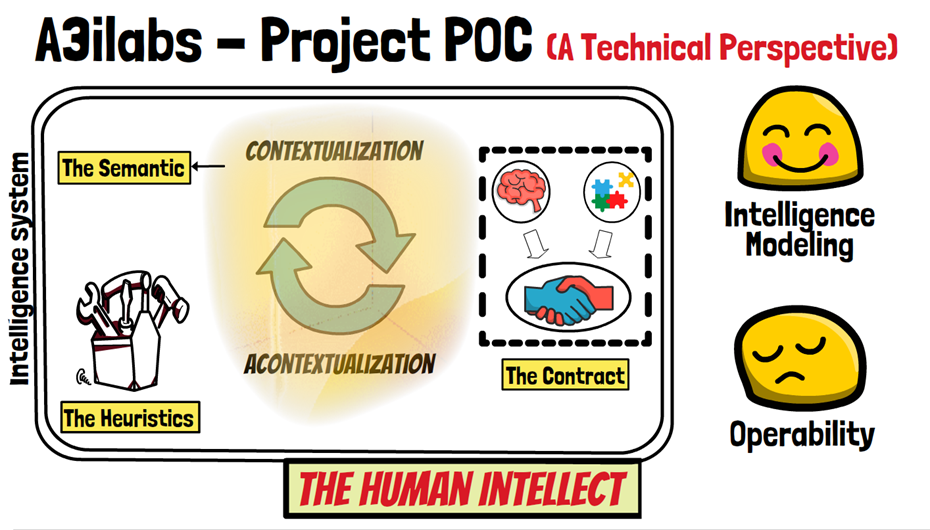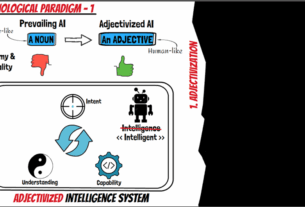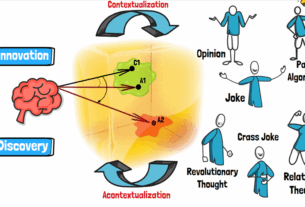Video Transcript:
Consider the scenario of a source of intelligence (the Subject) liaising with a problem to be solved (the Object) in determined contexts. Let the subject contexts denote operational semantics of the involved agent’s beliefs and biases, prior object experience etc. while the object contexts encapsulate the knowledge representations of the object instance.
A consistent semantic perspective of such an encounter might be postulated, by a context-external intelligence (say, a human observer), as resulting from a protocol between the subject and the object that lets corresponding contexts blend, provided such fusion (or what’s termed Contextualization) be coherent across –
- multiple such liaisons,
- diverse object instances, and
- diverse subject agent instances.
Further, the contextualization and the coherency thereof relate to the –
- possibility of compatible definitions for subject and object contexts,
- possibility of mapping the contextualization outcome to some baseline Semantic, say, the one that the observer understands, and
- possibility of defining a proximity metric vis-a-vis the baselined semantic space to allow for the notion of subjective interpretations, although varying, being valid if confined to some definition of semantic neighborhoods,
where
- the ‘Semantic’ refers to a repository of subjective understanding, not mere representations of the knowledge.
This characterization signifies several resonant traits associated with human intelligence and is termed ContextualIntelligence, with the directionality of fit from the Object to the Subject. However, this cognitive model does not yet encompass the most defining aspect of human intellect that flows from the Subject to the Object – the free willed intelligence that reveals in a variety of flavors such as articulation, creativity, discovery, strategy, sense of humor etc. To incorporate subjective freewill as an integral part of this holistic assessment, the Protocol postulate is refined by extending previously mentioned –
- context-externality of the observer to system-externality, affording a systemic domain of influence for the subjective freewill,
- protocol to a more binding subject object contract, that not only enables contextualization but also endorses the systemic subject and object, and
- the Semantic as consisting of object understanding in an ensemble of potentialities, imparting it a characteristic termed inward extensibility – the ability to expand inwards indefinitely within set limits. Such understanding gets eventualized, within the system, by exertion of subjective freewill. Only eventualized knowledge is ready for further contextualization.
Without loss of generality, we further contend the process of eventualization involves the subject conceiving –
- alternate subjective interpretations of the object within already eventualized semantic neighborhoods, or
- newer semantic neighborhoods to better reconcile with the object contexts
by way of –
- contextualizing the object with versions of the subject contexts that are transformed within the ambits of the prevailing subject object contract. This is termed the Acontextualization hypothesis.
Whereas the process of eventualization is as depicted,
- subjective freewill is postulated to be the impetus behind the system-valid and contract-abiding subject context transformations. This is termed the Freewill hypothesis.
While the contextual component provides an innate purpose to the subjective intelligence, this component that is termed Acontextual Intelligence, offers a motivational source to the subject, the motivation being to propagate within the systemic semantic space.
In the context of the generic portrayal of subjective intelligence thus far, where the dynamics involve locating within and broadening the eventualized semantic space, intrinsic capabilities of the subject relate to the navigational abilities within the Semantic. Moreover, the capabilities may not merely be programmed from outside to retain the integrity of the intelligence system. Such enablement of the subject is postulated to be heuristic in nature (as opposed to algorithmic) and at the very least comprise –
- a tie-breaker criterion in case of competing semantic interpretations during contextualization – as the systemic rendition of Occam’s Razor, and
- a generic causal heuristic as a basis for associating disparate bits of understanding to let the subject agents negotiate the Semantic while eventualizing. Such a heuristic provides a generic correlation between the cause, the effect, and the relating rule laying foundations for deductive, inductive, and abductive system internal logic.
The cross-cutting postulates of the Subject-Object contract, Intelligence System, and the Potential Semantic Schema complete the picture of the cognitive model by providing a contextual relevance to the intelligence.
Acontextual model of Cognition as it is termed, although rather cursory in detail and seemingly speculative at times, offers the characterization of the only known definitive intrinsic source of intelligence – the human intellect.
Essentially, the model of human intellect in the postulated worldview is of perpetual cycles of alternating Contextualization and Acontextualization feeding off each other, drawing capabilities from an a priori heuristic enablement, scoped by the contexts provided by a systemic Semantic between the systemic subject and the object engaged in a systemic contract. Though this affords a provisional understanding of the involved dynamics, it does not yet offer an operational definition to the process of intelligence generation. A more rigorous SWOT analysis of further research along this line of thought forms the agenda for upcoming technical whiteboard videos.
Finally, the conceptual vocabulary introduced in this whiteboard presentation helps critique current trends in the fields of AI & AGI. As will be seen, such an appraisal of prevailing cognitive architectures and their evolution plays an important role in gaining insights into endowing operability to various abstract notions that are integral to the Acontextual model of Cognition.

Video 5 Summary
Simply speaking, Video #5(/10) provides a semi-formal introduction to the proposed Acontextual Model of Cognition, the basis for structuring subjective human-like intelligence.
- Third-person POV: The narrative takes an observational, external voice in portraying human-like subjective intelligence. The observer sees the interaction between the subject and the object as a protocol that lets their respective contexts blend into shared meaning. This sets the tone for method definition later in Video 7 subseries titled The Omnijective Method: From beyond the Singularity.
- The three abstraction centers: To keep the narrative of the model flowing, it draws on three key abstractions: the Semantic, the Heuristics, and the Contract. However, given the limits of present-day techniques, none of these ideas are currently practical as explained. These will be examined more thoroughly in Video 7 subseries and demonstrated in Project POC.
- The Semantic: Think of the Semantic as all the potential meaning that exists inside an intelligence system. When part of that meaning takes shape through semantic eventualization, it becomes what we consider systemic knowledge. But it’s important to remember – the Semantic itself isn’t a storehouse of knowledge, or any of its representations like data or information.
- The (Omnijective) Heuristics: In a subtle shift from its usual meaning, the Omnijective idea of heuristics refers to the shortcuts a subjective agency employs during cognition. More specifically, they guide the construction of behavior-determining algorithms from micro-semantic components. The micro-algorithms referred to earlier are the most common examples of Omnijective heuristics.
- The (Omnijective) Contract: This is at the heart of an Omnijective intelligence system, shaping every occurrence at every scale within it. It serves as the wellspring of subjective Acontextualization, and with it, the core of subjective free will. From an operational standpoint, this reflects a concentration of sophisticated mathematical ideas that diverge sharply from every fabric of human intuition. Some of the foundational considerations for this new strain of mathematics will be explored in the Video 7 subseries.


